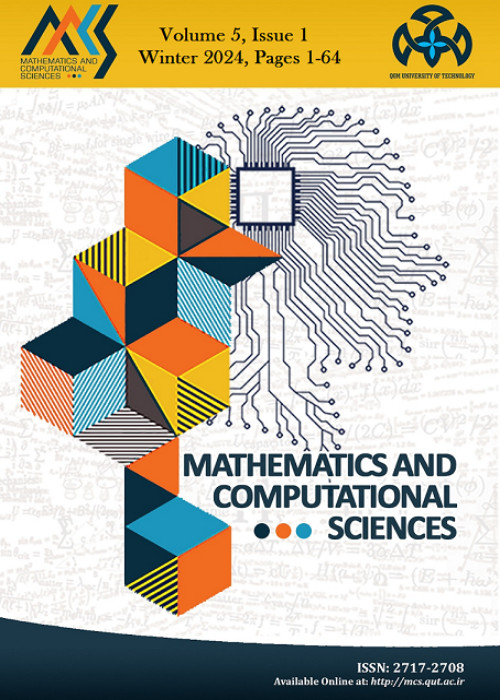فهرست مطالب
Mathematics and Computational Sciences
Volume:2 Issue: 2, Spring 2021
- تاریخ انتشار: 1400/02/11
- تعداد عناوین: 6
-
-
Pages 1-15The study presents the approximate solutions of Schrodinger equation in D-dimensions with the modified Mobius square plus Hulthen potential. The energy eigenvalues and corresponding wave functions are obtained using the Nikiforov-Uvarov (NU) method. Special cases of this potential are reported. Numerical results are also computed.Keywords: Schrodinger equation, modified Mobius square plus Hulthen potential, Nikiforov Uvarov method
-
Pages 16-22Creation and annihilation operator’s method that is associated with the system was proposed to determine the oscillator frequency of the bound system which consists of two or more particles, as a function of the orbital quantum number, which is the main parameter to describe the interaction between particles that create new bounding systems like charmonium, hyperatoms, pentaquark, etc. Using quantum field theory and quantum electrodynamics methods, we are found that the creation of a bound state occurs if the coupling constant be small, and masses of gauge bosons also be very small in comparison with masses of constituent particles. The modified Hamiltonian (Schrödinger equation) based on the oscillator frequency parameter describes the bound state characteristic such as the mass spectrum, the constituent mass of particles, and binding energy. The method is typically used to solve the relativistic or nonrelativistic Schrödinger equation and to calculate the binding energy or energy eigenvalue of the system for a wide class of potentials allowing the existence of a bound state. The main purpose of this study is to investigate the relationship of the particle binding energy with the oscillator frequency of the Coulomb type potential (or other potentials) bound systems with the nonrelativistic Schrödinger equation.Keywords: Bound states, Mass spectrum, Hypernuclei, Oscillator frequency, Wick ordering
-
Pages 23-38In this work, we approximate a typical model form of bivariate static Schrödinger Equation by an appropriate approach based on bilinear finite element method (FEM), then we obtain the results of the PDE on a new type 3 feather rose coefficient function in a rectangular domain i. e., eigenfunctions or solutions. In fact, we search for influence of 3-feather rose and pass by a weak singularity barrier in the origin. We also obtain approximate eigenvalues and final stiffness matrix elements. This paper is accompanied by examples of the novel Schrodinger’s model.Keywords: Rectangular, bilinear finite elements, Schrodinger equation, 3 feather rose form potential, Variable Schrodinger coefficient, Galerkin method
-
Pages 39-43In this paper we give an alternative proof for a vanishing result about flat functions proved in G.Stoica, "When must a flat function be identically zero", The American Mathematical Monthly 125(7)648-649, 2018. With a dynamical approach we give a generalization of this result to multidimensional variables.Keywords: Quasi analytic functions, Gronwal inequality, Differential operators
-
Pages 44-49In this paper, we investigate the existence of solutions to a class of non-linear system. Using some theorems, we prove some existence results for this system.Keywords: positive solution, Non-linear equation, p-Laplacian equation
-
Pages 50-59Elliptic curve is a set of two variable points on polynomials of degree 3 over a field actedby an addition operation that forms a group structure. The motivation of this study is that themathematics behind that elliptic curve to the applicability within a cryptosystem. Nowadays, pair-ings bilinear maps on elliptic curve are popular to construct cryptographic protocol pairings help totransform a discrete logarithm problem on an elliptic curve to the discrete logarithm problem in nite elds. The purpose of this paper is to introduce elliptic curve, bilinear pairings on elliptic curves asbased on pairing cryptography. Also this investigation serves as a basis in guiding anyone interestedto understand one of the applications of group theory in cryptosystem.Keywords: Elliptic curve, Bilinear map, Pairing-based cryptography


